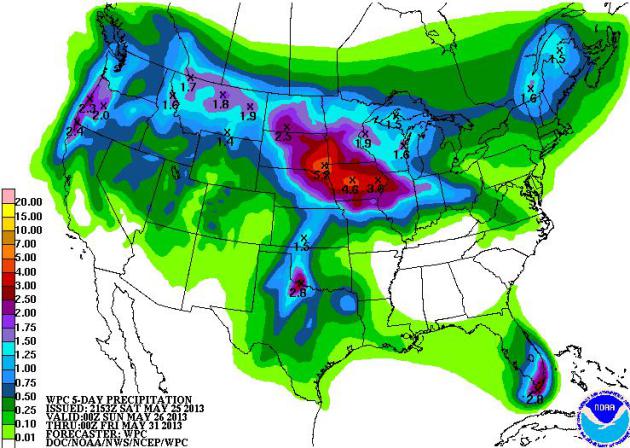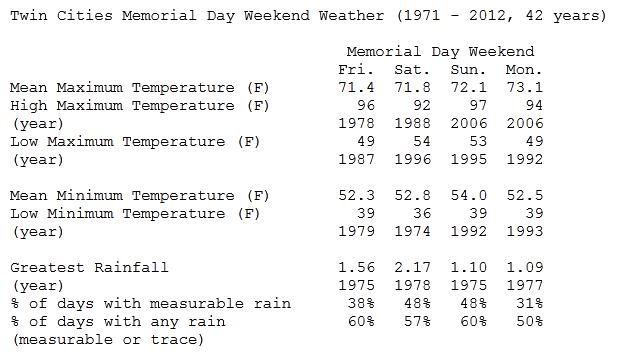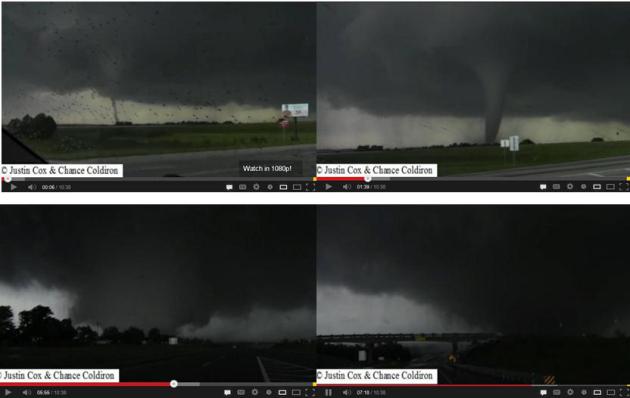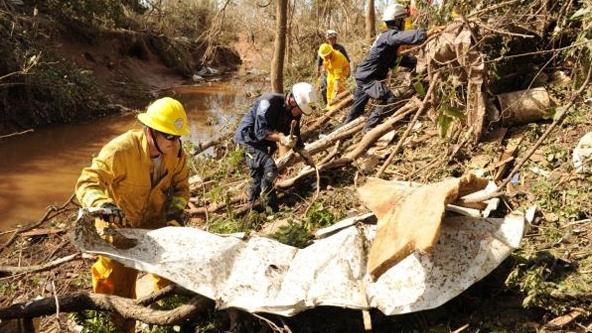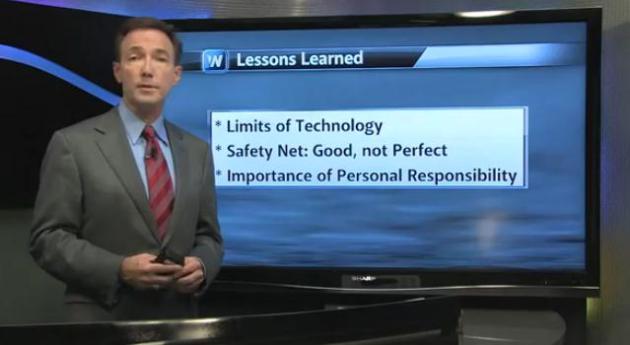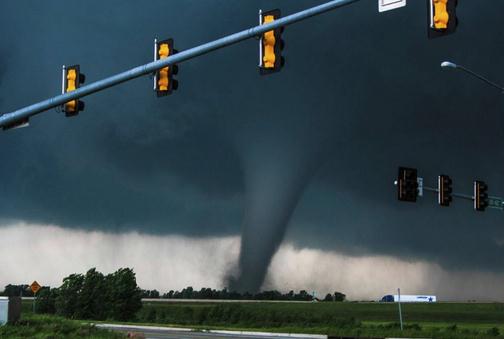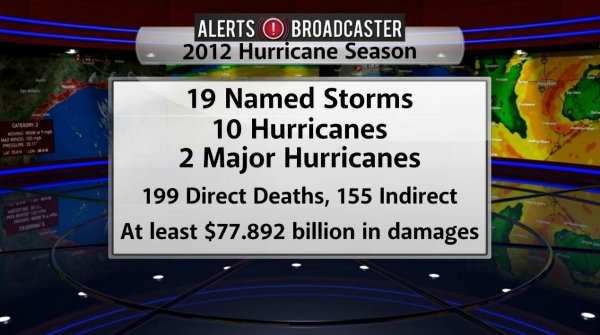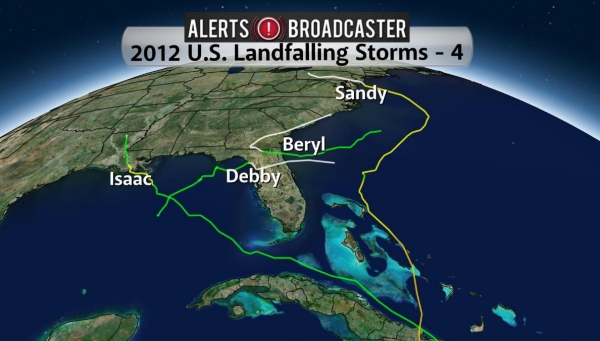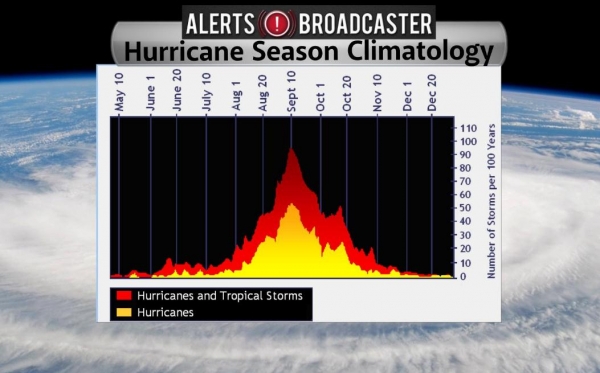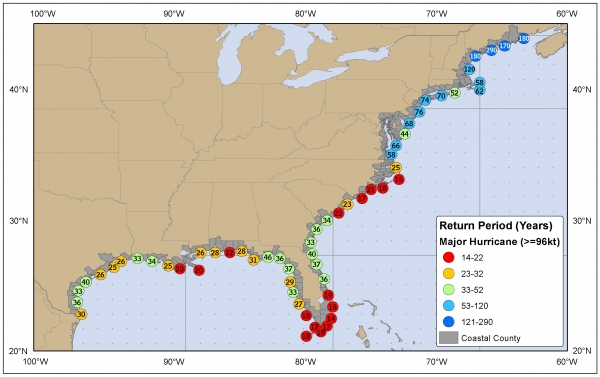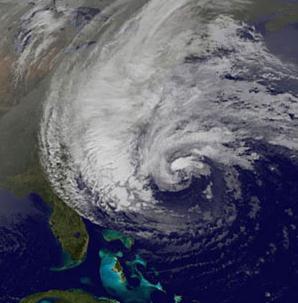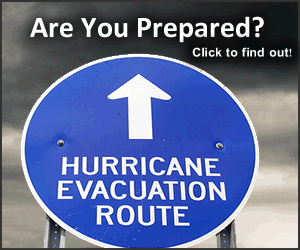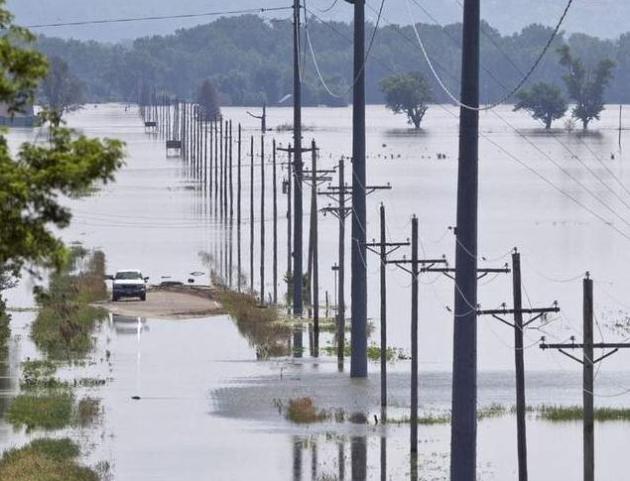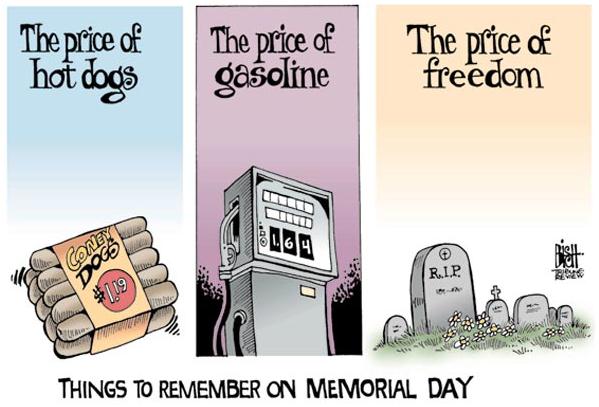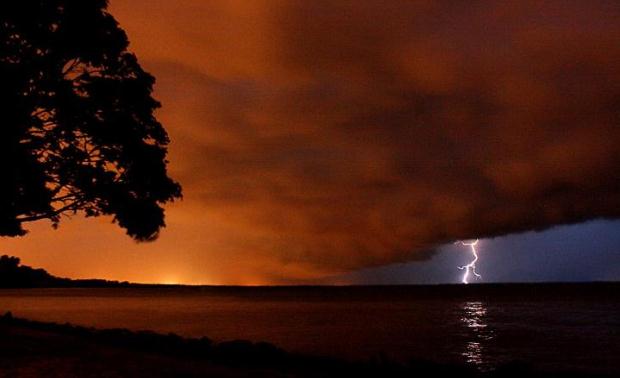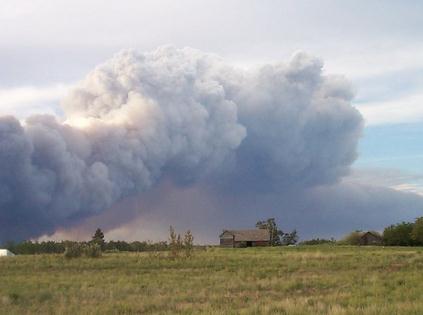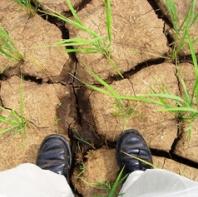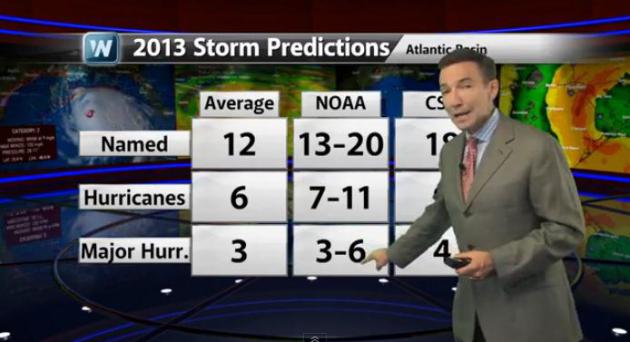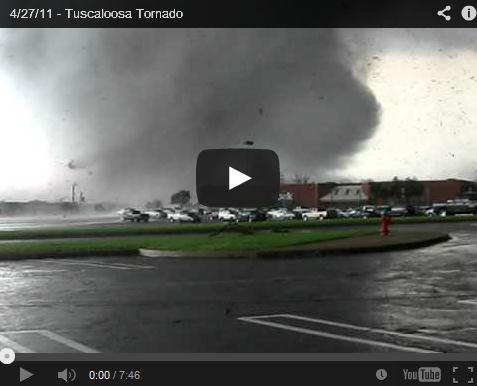Living With Risk
"I enjoy Minnesota summers. Both weeks!" the parable goes.
How could we have a 7 month boating season in
2012, only to be tracking late May frosts & jackets one year later? A
new level of erratic.
18" snow in April - icy lakes in May. No,
Minnesota is not for the squeamish. But those cold fronts we love to
complain about inoculate us to a large degree from the worst tornadoes
and ocean-roaming weather beasts: hurricanes can't touch us.
Texas, Alabama, North Carolina: roughly 4 times
more billion dollar weather disasters since 1980 than Minnesota, says
NOAA. In spite of our many weather faults we have no active earthquake
faults. California is lovely, when tectonic plates aren't shifting. As
long as that super-volcano in Yellowstone behaves itself we'll be just
fine.
Today: more clouds, low to mid 60s, but the
heaviest T-storms rumble over far southern Minnesota. Not great but at
least it won't snow. A warm front limps north tomorrow, sparking
scattered T-storms for Memorial Day, but no all-day rains.
A stormy pattern is in place all week; 80s by
midweek with sufficient moisture & wind shear for a few severe
storms. No storms with names though. "Andrea" may form near Florida
within 2 weeks.
Uh oh.
Even Greener Lawns. Remember
the drought? We may go from drought to spotty flash flooding this week
as a series of warm fronts surge northward, each one initiating
convection (thunderstorms). There's even a potential for an MCS, a
meso-convective system: swarms of heavy/severe thunderstorms that tend
to blow up late at night, capable of minor wind damage and flooding
rains. Talk about a weather turnaround. NOAA's QPF product prints out
some 3-5" amounts over Iowa and southeastern South Dakota, the best
chance of heavy rain over far southern and western Minnesota.
A Noisy Warm Frontal Passage?
Much of today should be dry (slight shower chance), but the approach of
warmer, more humid air may set off strong T-storms from Sunday night
into Memorial Day, in fact scattered showers and T-storms will linger
right through the end of the week. Note that the higher-res 4 km. NAM
prints out nearly 2" of rain from late tonight into midday Monday.
Graphic: Iowa State.
Major Holiday = Blue Blobs. What happened to the
green blobs? Now they're blue, and that means scattered showers and
T-storms tonight and Memorial Day, but no steady, all-day rains are
expected. We break out into a warm, sticky, thundery airmass by Tuesday
and Wednesday with highs reaching the 80s. Finally. 84 NAM outlook:
NOAA.
Putting This Spring's Cold In Context. January thru
March was the 8th warmest period in over 100 years for the planet, but
it's human nature to look out the window and make assumptions. I get it.
UCAR has a good overview of our chilly spring, placed in a larger context of a slowly warming atmosphere; here's an excerpt: "
What
led to this springtime string of cold and snow? It’s due in part to
the perfectly normal seasonal shift of the polar jet stream. The jet
often flows from west to east across the heart of the United States in
winter. By summer, it’s flowing mainly across Canada and the northern
tier of states. Spring and autumn are times of transition, when the jet
oscillates back and forth. Throughout the year, packets of upper-level
low pressure ride the jet stream, rippling along the flow like waves
and often bringing stormy weather with them. Sometimes these
atmospheric waves “break.” Southward dips in the jet stream can become
so large and deep that they snap off from the main flow. The result: an
upper low marooned hundreds of miles south of the polar jet stream..."
Image credit above: "
Cut-off centers
of low pressure loitered near California and the U.S. South early this
week, with the polar jet stream in a summerlike position across
northern Canada. Shown here are upper-level winds as of 8:00 a.m. EDT
on May 6." (Image courtesy
NOAA/NCEP Model Analysis & Guidance.)
Historical Memorial Day Holiday Weekend Weather In The Twin Cities. Information courtesy of the
Minnesota Climatology Working Group: "
Beginning
in the late-1860's, Memorial Day was traditionally observed on May 30
(at least in northern states). The congressionally-mandated Memorial
Day holiday weekend (last Monday in May) commenced in 1971. The
investigation was limited to the period of time since the formal
designation of the Memorial Day holiday weekend (42 years of data,
1971-2012). Memorial Day can occur as early as May 25 and as late as May
31. Given the fact that the dates of the holiday weekend float about,
don't put too much stock in the climatological significance of the
statistics offered below. However, the numbers are fun to mull over.
It appears that Memorial Day is often the nicest day of the weekend."
Wet May. No, this won't come as a shock, but we are
muddling through yet another cool, wet month. Dr. Mark Seeley has some
interesting details in this week's edition of
WeatherTalk; here's an excerpt: "...
The
month of May has brought measurable rainfall on many days. Of the
first 24 days of the month many observers report rainfall on 15 or 16
days, a very high frequency. Accumulated rainfall for the month is
already record-setting at many southern Minnesota locations, with a week
to go in the month. Some of those already reporting record rainfall
amounts for the month include:
12.13 inches at Grand Meadow, 9.16 inches at Spring Valley, 9.03 inches
at Austin, and 8.63 inches at Rochester. The all-time maximum
rainfall for the month of May in Minnesota is 15.79 inches at St
Francis (Anoka County) in 2012. If Grand Meadow (Mower County) has a
wet last week of May, they may threaten that state record this month.
For southeastern Minnesota counties May of 2013 already ranks as the
5th wettest May in history, averaging nearly 7 inches of rainfall.
This number is likely to increase over the next week before the month
concludes next Friday..."
Drought Continues To Ease. The entire Twin Cities
and St. Cloud metro areas are officially out of the drought now,
lingering pockets of moderate to severe drought over southwestern
Minnesota, but conditions continue to improve statewide. Yes, this
spring has been a bust, but at least there's water in our lakes, and
look at how good your lawn looks! Details from the
Minnesota Climatology Working Group: "
The U. S. Drought Monitor, released on May 23 places portions of southwest Minnesota in the Severe Drought category (map at right).
Only 7 percent of Minnesota's landscape is in Severe Drought, a
substantial improvement over early April when 67 percent of Minnesota
was experiencing Extreme Drought or Severe Drought. The maximum
geographic extent of the present drought was late autumn 2012 through
mid-winter when 83 percent of the state was rated in the Extreme
Drought or Severe Drought categories..."
Sophisticated Tornado Warning System Saved A Lot Of Lives In Oklahoma. Here's a segment from
Business Insider: "
When a devastating tornado touched down in Moore, Oklahoma on May 20, locals had 16 minutes to get to safety before the mile-wide EF4 hit. Even that seemingly short warning system is enough to save a ton of lives. The Oklahoma City siren system, a network of 181 emergency warning sirens,
was state-of-the-art when it went online in April, 2002. It cost $4.5
million to install the new system, which replaced the cold war-era
sirens that covered only the most densely populated parts of the city..."
Photo credit: SUE OGROCKI / AP
Lifecycle Of A Weather Monster. Here is some of the
most remarkable raw tornado footage I've ever seen,courtesy of Justin
Cox and Chance Coldiron. This is not for broadcast video; details on
their intercept with the Moore EF-5 via
YouTube: "
Raw
footage of Fast Unit 70's (Chance Coldiron & Justin Cox)
coverage of the Moore tornado that was used by KOCO5 during the event
on May 20th, 2013. We watched as the tornado formed in front of us
and rapidly intensified then moved across highway 37 in Newcastle,
OK. Then the tornado continued to intensify as it tracked across the
Canadian River and the interstate 44 bridge. The monster tornado was
filmed from close range off the I-44 bridge north of Newcastle as it
was headed for Moore."
Storm Shelters And Safe Rooms Save Lives When Tornadoes, Hurricanes Strike. Here's a portion of a timely article at
EHS Today: "...
High
wind speeds produce flying debris turning construction materials,
furniture, appliances and just about anything into deadly missiles. The
standard requires that walls, windows and doors are tested to
withstand flying projectiles.
Tornado storm shelters are required to
house people for 2 hours and include minimum requirements for
ventilation, sanitation facilities, a fire extinguisher, lighting and
other minimal power needs.
A storm shelter does not need to be a
separate space or structure. A shelter can be a “hardened” room inside a
building that normally is used for other purposes. For instance,
schools often use a classroom or group of classrooms, a gymnasium or
library as a shelter. The walls, doors, ceilings and windows are then
designed to withstand the higher wind loads and flying debris.
.."
Photo credit above: "
In Moore, Okla., there have been
dramatic examples of survivors who lived through the killer tornado
because the home or other building they were in had a safe room or
fortified basement." Jocelyn Augustino/FEMA
Lessons Learned. It was a long week chained to the
Doppler radar. In light of the destruction in Moore, failure of
GOES-13, and some troubling trends in the Arctic I recorded this
YouTube clip, courtesy of WeatherNation TV: "
This
is your chance to get inside the mind of Meteorologist Paul Douglas.
What is he thinking about this week? Tornado safety, a satellite
going dark and Arctic evacuations."
Racing The Clock And A Storm: A Way Of Life In Tornado Alley. Here's a clip from a
New York Times article
on how Oklahomans deal with tornado season, an amazing,
minute-by-minute account of the minutes leading up to Moore's EF-5: "...
In this breeding ground of Oklahoma tornadoes,
people prepare for the season with the care that the defensive
coordinator for their Sooners prepares for the inevitable autumn. They
develop family plans, hang on the words of meteorologists, and, in
places like Moore, become accustomed to the Saturday noontime testing of
emergency sirens. At the same time there exists disbelief that the
devastation visited upon neighbors could ever happen to them or, that
is, could ever happen to them again. Amid all the siren tests and
awareness and false alarms, the warning can still be a half-hour, maybe
a little more, maybe a little less. This means you must stop what
you are doing, shake off the disbelief, track down loved ones and
find shelter, all in the time it takes to watch a few rounds of
“Jeopardy!"...
Photo credit above: "
A handout photo of a tornado in
Newcastle, Okla., before it reached Moore, about 10 miles away, on May
20, 2013. With authorities saying they have likely recovered all the
bodies to be found beneath the rubble left by the Category 5 tornado,
the focus turned to the long and expensive path of recovering from
one of the most catastrophic storms in Oklahoma's history." (Nick Rutledge via The New York Times).
5 Myths About Tornadoes. Meteorologist Mike Smith makes some very good points in this story at
The Washington Post; here's an excerpt that caught my attention: "...
But
many misconceptions persist — misconceptions that can encourage bad
policy and put lives at risk. I’d like to dispel some of the myths.
1. Meteorologists aren’t any good at forecasting these storms.
How does 99.3 percent sound? In 2011, 553 people lost their
lives in tornadoes. For all but four of those victims (99.3 percent),
both a tornado watch and a tornado warning were in effect before the
storm arrived. Modern tornado warnings are Nobel Prize-worthy endeavors
that combine weather science, social science and technology. As
recently as 1990, people in the path of a tornado were lucky to get
five minutes’ warning. Now, thanks to advances in radar, computer
simulations and research on how tornadoes develop, the average “lead
time” is 12 minutes — and more than 15 minutes for major tornadoes. The
city of Moore had a stunning 36 minutes of warning..."
Moore, Oklahoma: Before And After The Tornado. This
ESRI URL shows the implications of an EF-5 tornado, with devasting detail that I haven't seen anywhere else.
Tornadoes Were Just The Beginning. This Hurricane Season Is Going To Be Stormy. Here's an excerpt from
Time Magazine: "...
Altogether
NOAA predicts a 70% likelihood that 13 to 20 named storms—which have
winds that sustain at 39 mph or higher—will occur, of which 7 to 11
could become hurricanes (winds higher than 74 mph). Of those three to
six may become major hurricanes, which means Category 3 to 5, with
winds above 11 mph. That’s all well above the average for an Atlantic
hurricane season, which lasts from June 1 to the end of November. Why
will this summer potentially be so stormy? For one, an atmospheric
climate pattern, including a strong African monsoon, that’s been
ongoing since 1995 will help supercharge the atmosphere for tropical
storms. Warmer-than-average water temperatures in the tropical Atlantic
and the Caribbean Sea will lead to more of the wet, hot air that
provides the fuel for hurricanes. And there is no El Nino—the
alternating climate pattern that means unusually warm sea
temperatures—which would usually suppress the formation of hurricanes..."
Photo credit above: "
Lightning in the sky over debris from the tornado that devastated Moore, Okla., Thursday, May 23, 2013." (AP Photo/Tulsa World, Mike Simons)
2013 Atlantic Hurricane Season Expected To Be Active.
2012 saw 19 named storms, the 3rd busiest year on record. The last
major hurricane to hit the USA was Wilma in 2005. That 7 year stretch
(of no category 3+ hurricanes) is the longest on record, so we are
overdue for a significant hurricane landfall. NOAA came out with their
official predictions on Thursday; based on a variety of factors it
promises to be a very active hurricane season, details via
Climate Matters: "
NOAA
released its annual Atlantic Hurricane Season Predictions.
Meteorologist Paul Douglas shares the factors forecasters consider when
coming up with their numbers. What do you think of NOAA's
predictions?"
Here's an excerpt from from one of my corporate
Alerts Broadcaster Outlooks (issue Saturday morning):

Predicting hurricane track & intensity is as much art as
science; knowing which models to trust, and when. My meteorology
professors at Penn State would cringe to hear me say this, but
intuition and past history can play as big a role as model trends.
Predicting hurricane potential 3-4 months from now is equivalent to
forecasting what financial markets will be doing in late summer. Good
luck with that. But there are factors that lead me to believe that
this will be another above average year for tropical storms and hurricanes
in the Atlantic basin, with as many as 2-3 hurricanes hitting the
U.S. coastline by October. Here's the logic behind that prediction:
*
Hurricane Cycle. There is a natural 25-40 year
cycle for hurricanes - we entered the busy/active part of that cycle in
the mid-90s, so this is a significant factor.
*
Warm SST's. Sea surface temperatures are warmer
than average, to the tune of 1F. That may not sound like much, but
hurricanes get their strength from warm ocean water, and every 1F. of
warmth increases hurricane potential by 5-10%
*
No El Nino To Save Us. El Nino warming phases in
the equatorial Pacific tend to increase winds over the tropics; more
wind shear shreds developing tropical storms, reducing the threat of
hurricane development in the Atlantic and Gulf of Mexico. Right now we
are in an ENSO-neutral state, meaning no El Nino or La Nina in the
Pacific.
*
Feeling Lucky? The last major (category 3 or
stronger) hurricane to strike the USA was Wilma in 2005. The
intervening 7 year stretch with no category 3+ hurricane is the longest
on record for the USA. Last October we saw what a category 1 storm,
Sandy, coming at high tide and a full moon can do. Jet stream winds are
more erratic this year, more sweeping north/south dips and bulges to
prevailing steering winds aloft, which increases the potential for
tropical systems to penetrate unusually far north.
2012 Recap. Last year was very active in the
Atlantic basin with 19 tropical storms; 10 strengthened into
hurricanes; 2 of those became major hurricanes (but remained out at
sea). Damage estimates vary, but generally run in excess of $70
billion, the vast majority of that from Sandy.
2012 Tropical Systems. NHC confirms 19 named
storms, the 3rd highest number on record in the Atlantic basin.
Mercifully most of those tropical storms and hurricanes remained out
over the open waters of the North Atlantic.
2012 U.S. Landfalling Storms. Only Isaac was a
full-fledged hurricane as it hit the U.S. coastline. Debby and Beryl
were tropical storms, and Sandy was "extra-tropical", technically not a
warm-core hurricane as it came ashore - although the distinction was
probably lost on waterlogged residents of New Jersey and metro New
York. In fact NOAA got a lot of grief for discontinuing Hurricane
Warnings before Sandy's landfall - this send the wrong message to
coastal residents who assumed the storm was weakening. Sandy was a
hybrid storm, a slowly weakening hurricane that was energized by a
Nor'easter, mutating into a storm 3 times larger than Katrina in 2005.
Slow movement and astronomical forcings whipped up a 900-mile wide band
of tropical storm force winds, the largest ever recorded, compounding
the storm surge problems for the northeast coast.
2013 Hurricane Prediction. I tend to agree with
both NOAA and CSU, Colorado State University, that we will experience
more hurricanes than usual again this year. The big question: will
prevailing winds guide those storms into the U.S. - or whisk them out
to sea, as was the case last year. For a variety of reasons, including a
more amplified north/south jet stream pattern (less of a westerly
wind bias aloft) I believe a higher percentage of tropical storms and
hurricanes will impact the Caribbean and U.S. in 2013. NOAA predicts
7-11 hurricanes, above the annual average of 6, and 3-6 major
hurricanes, category 3 or stronger.
* it's important to remember that, overall, climate change doesn't
seem to be triggering more hurricanes in the Atlantic, but since 1970
the number of category 3 or stronger hurricanes has roughly doubled; it
may be having a causal effect on hurricane intensity. Scientists
believe this may be linked to consistently warmer sea surface
temperatures. 90% of all warming is going into the oceans, and that has
implications for tropical development.
Hurricane Climatology. Think twice before booking a
Carnival Cruise on September 10, the date hurricanes are most likely
to reach the U.S. coastline, statistically. Atlantic basin hurricanes
have been observed every month of the year, but tend to peak from late
August into early October, when sea surface temperatures in the
Atlantic and Caribbean are warmest.
Return Frequence Of Major Category 3+ Hurricanes.
We compiled this map showing the probability of major (category 3 or
stronger) hurricanes along the U.S. coastaline. The red dots show the
locations of highest risk, based on past storm tracks: a return
frequency of 14-22 years for New Orleans, Mobile, much of south Florida
and the coastal Carolinas and Outer Banks.
Out On A Limb. Based on a variety of factors,
including prevailing winds, SST's, climatology and historical analogs,
this is my forecast for overall hurricane risk level in 2013; the
greatest potential for landfalling hurricanes and tropical storms from
south Florida northward to Savannah, Hilton Head and Charleston, South
Carolina. A moderate risk for landfalling hurricanes exists from
Galveston and New Orleans eastward to Mobile and Pensacola, with a low
to moderate risk from Virginia's Tidewater northward to Long Island
and Cape Cod.
Tropical Whispers - Risk of "Andrea". Confidence
levels are still low; it's not time to start moving people or testing
emergency generators, but models have been trying to spin up the first
tropical system of the year near Mexico's Yucatan Peninsula, tracking
it due north over Florida, possibly posing some risk to the southeast
coast by June 5-8. We're watching this and examining model trends over
time. I just wanted to plant an early seed and raise overall
awareness for possible tropical development impacting Florida and
southeastern facilities in a 10-14 day timeframe. The first tropical
storm of 2013 will be named Andrea.
NOAA Predicts Active 2013 Atlantic Hurricane Season.
We're in an ENSO-neutral period right now, no La Nina cooling or El
Nino warming. El Nino also tends to turn on stronger winds in the
tropics, which can deter tropical storm formation. It may be another
very active season - here are a few excerpts from
NOAA: "
For
the six-month hurricane season, which begins June 1, NOAA’s
Atlantic Hurricane Season Outlook says there is a 70 percent
likelihood of 13 to 20 named storms (winds of 39 mph or higher), of
which 7 to 11 could become hurricanes (winds of 74 mph or higher),
including 3 to 6 major hurricanes (Category 3, 4 or 5; winds of 111
mph or higher)....
Three climate factors that strongly control Atlantic hurricane
activity are expected to come together to produce an active or
extremely active 2013 hurricane season. These are:
- A continuation of the atmospheric climate pattern, which
includes a strong west African monsoon, that is responsible for the
ongoing era of high activity for Atlantic hurricanes that began in
1995;
- Warmer-than-average water temperatures in the tropical Atlantic Ocean and Caribbean Sea; and
- El Niño is not expected to develop and suppress hurricane formation..."
Hurricane Outlook: Another Busy Atlantic Season. There's some good information and statistics in this AP article, courtesy of
boston.com: "...
This
year, all the factors that go into hurricane forecasts are pointing
to an active season, or an extremely active one, said lead forecaster
Gerry Bell of the Climate Prediction Center. Those factors include:
warmer than average ocean waters that provide fuel for storms, a
multi-decade pattern of increased hurricane activity, the lack of an El
Nino warming of the central Pacific Ocean, and an active pattern of
storm systems coming off west Africa. The Atlantic hurricane season
goes through cycles of high and low activity about every 25 to 40 years
based on large scale climatic patterns in the atmosphere. A high
activity period started around 1995, Sullivan said..."
As Need For New Flood Maps Rises, Congress And Obama Cut Funding. Here's an excerpt from
OPB News: "...
Congress
has cut funding for updating flood maps by more than half since 2010,
from $221 million down to $100 million this year. And the president’s
latest budget request would slash funding for mapping even further to
$84 million — a drop of 62 percent over the last four years. In a
little-noticed written response
to questions from a congressional hearing, FEMA estimated the cuts
would delay its map program by three to five years. The program “will
continue to make progress, but more homeowners will rely on flood hazard
maps that are not current,” FEMA wrote"...
 Sequester Cuts Wildfire Prevention, Sets Up Bigger Blazes
Sequester Cuts Wildfire Prevention, Sets Up Bigger Blazes.
Grist has another story that caught my eye - here's a portion: "...
Last year saw the third-worst wildfire season in five decades; the Southern California fire that threatened thousands of homes earlier
this month looks to be only the first flash of what the National
Oceanic and Atmospheric Administration announced last week will be an
above-average season for much of the Southwest. But the sequester took
a 7.5 percent bite out of the Forest Service’s budget, nearly half of which is
spent fighting wildfires. That means there will be 500 fewer pairs of
boots on the ground and 200,000 fewer acres treated to prevent fires;
the agency’s next proposed budget cuts preventative spending by a
further 24 percent..." (photo: DNR).
 Weather Service To Add Major Might To Computing Power.
Weather Service To Add Major Might To Computing Power. With any luck I won't to rely on the European ECMWF model quite so much in the years ahead.
Kitsap Sun has the story - here's an excerpt: "...
After coming under fire for falling behind the capabilities of other nations,
the National Weather Service (NWS) is setting out to make an
unprecedented increase in its computing power over the next several
years, the agency announced this week. The computing boost will triple a
key measure of the agency's main weather model, and could yield major
improvements to its weather forecasting and warnings capabilities. The
program is made possible by recent funding from Congress contained in
the Hurricane Sandy
relief legislation, which was signed into law in January. The NWS
plans to use $25 million of the $48 million provided to it in the Sandy
supplemental bill, along with funds that are called for in President
Obama’s fiscal year 2014 budget proposal,
to bring about “unprecedented” computing upgrades — going from an
operational computing capacity of 213 peak teraflops at the end of the
current fiscal year, to 1,950 peak teraflops by the end of fiscal year
2015, according to NWS Director Louis Uccellini..."
The Suicide Epidemic. I've lost too many friends and
family members to suicide. As a society we don't stigmatize people
with diabetes, and yet another chemical imbalance, depression, is often
brushed under the carpet. No, we can't possibly admit to that, as if
it's a character flaw or genetic defect. But it's not. Depression is
treatable, with medication and therapy everyone can be helped. We have
to keep pounding home that message, to our friends, colleagues and
family members, and if you suspect someone is in a dark place, don't
ignore it - do something about it. Help them find the help they need.
Read this article at
The Daily Beast and then do something positive, like supporting
SAVE (Suicide
Awareness, Voices of Education), based in Bloomington with an
international outreach. Their director (and a good friend of mine) Dr.
Dan Reidenberg, has testified before Congress. SAVE has an amazing
staff and volunteers working 24/7 to avoid senseless, horrific
tragedies. Consider attending their annual Fashion Show to raise more
funds to help more people in need - next Thursday, May 30, in
Minneapolis.
Details are here. I feel strongly about SAVE and it's mission - I hope to see you there.
Climate Stories...
Century-Old Science Helps Confirm Global Warming. Here's an excerpt from
NASA's Jet Propulsion Laboratory: "
A
new NASA and university analysis of ocean data collected more than 135
years ago by the crew of the HMS Challenger oceanographic expedition
provides further confirmation that human activities have warmed our
planet over the past century. Researchers from the University of
Tasmania, Sandy Bay, Australia; and NASA's Jet Propulsion Laboratory,
Pasadena, Calif., combined the ship's measurements of ocean
temperatures with modern observations from the international Argo array
of ocean profiling floats. They used both as inputs to
state-of-the-art climate models, to get a picture of how the world's
oceans have changed since the Challenger's voyage..."
Image credit above: "
Drawing
of the HMS Challenger survey vessel preparing to measure ocean
temperatures by lowering thermometers deep into the ocean on ropes in
1872. A new NASA and University of Tasmania study combined the ship's
135-plus-year-old measurements of ocean temperatures with modern
observations to get a picture of how the world's ocean has changed
since the Challenger's voyage. The research reveals that warming of
Earth can be clearly detected since 1873, with the ocean absorbing the
majority of the heat." Image credit: NOAA.
From Global Warming To Flouride: Why Do People Deny Science? Salon has a good story about the roots of denial; here's an excerpt: "...
Why
is it that ordinary citizens do not sit up and take notice of the
danger? Unfortunately, the focus remains mostly on “global warming”
instead of on the bigger concern—that we are disrupting the planet’s
climate in completely unpredictable ways. Because climate prediction
includes a significant degree of scientific uncertainty, this has
allowed skeptics to gain the upper hand and even corner some expert
scientists into difficult positions. A friend in the climate research
field privately admits that he and most of his colleagues are afraid to
stand up and speak out because of the vituperative attacks and massive
smear campaigns that they would inevitably suffer—as did Michael Mann
and others. But much research indicates that as forests disappear and
polar ice caps melt, etc., there are unpredictable feedback mechanisms
that will make global warming increasingly difficult to tackle. Even
more worrisome, there will likely be a tipping point after which
continued warming may become irreversible, no matter what we do..."
Photo credit: "
The clouds of a thunderstorm roll over neighborhoods heavily damaged in a tornado in Moore, Oklahoma, May 23, 2013." (Credit: Reuters/Lucas Jackson)
Where Is President Obama's Climate Agenda? Here's the intro to a story from
Politico:
"President Barack Obama began his second term with a ringing pledge to
tackle climate change — saying that “the failure to do so would betray
our children and future generations.” Four months later, everyone’s
still waiting. Instead of taking bold steps, Obama’s environmental
regulators are dodging questions about how they intend to rein in the
nation’s largest sources of greenhouse gases. They missed a major
deadline last month for rolling out rules for future power plants,
prompting environmental groups and several states to threaten lawsuits.
And the EPA has insisted to Congress that it’s not even working on
regulations for the next piece of the carbon puzzle — the nation’s vast
fleet of existing power plants..."
Photo credit: Politico, AP.
Insurers And Climate Change: The Truth Is More Complicated Than The Sound Bytes.
Insurance Journal has the story - here's a clip: "...
On
one hand, if one doubts the opinion of an overwhelming majority of
scientists, the insurance industry provides another major data point.
Given that accurate and unbiased weather forecasts are key to property
insurers’ business, the fact that the industry broadly accepts that
climate change is real and likely to be a problem should be taken
seriously by anyone who believes in the power of markets to aggregate
information. If insurers were not concerned about climate change, that
would be a very strong piece of evidence that politicians, the media or
scientists have hyped the issue beyond what it deserves. In fact, every
large property insurer incorporates climate change-related projections
into its own models. Every large property insurer that I know of
considers the likelihood of climate change-linked catastrophes to be a
future operational threat. Smaller property insurers do less long-term
planning and are less likely to make direct use of climate change
projections, but they still feel the impact of those projections in
terms of how much reinsurance they can buy and at what price..."
A Mission On Climate Change. Here's a portion of an Op-Ed at
The Washington Post: "...Only someone who was ignorant of basic science — or deliberately being obtuse — could write a sentence like this one: “
Contrary
to the claims of those who want to strictly regulate carbon dioxide
emissions and increase the cost of energy for all Americans, there is a
great amount of uncertainty associated with climate science.” Oh,
wait, that’s a quote from an op-ed in The Washington Post by Rep. Lamar Smith (R-Tex.),
chairman of the House Committee on Science, Space and Technology.
Yes, this is the officially designated science expert in the House of
Representatives. See what I mean about Obama likely having to go it
alone? For the record, and for the umpteenth time, there is no “great
amount of uncertainty” about whether the planet is warming or why. A new study
looked at nearly 12,000 recently published papers by climate
scientists and found that, of those taking a position on the question,
97 percent agreed that humans are causing atmospheric warming by
burning fossil fuels, which releases carbon dioxide and other
greenhouse gases..."
Photo credit above: Brad Birkholz.
Climate Change And Wildfire - Research Examines Relationship.
PlanetSave has the story; here's an excerpt: "
Changes
in the climate are intimately connected with wildfires, both causing
them and being being caused by them. Recent research has estimated
that wildfires will increase by around 50% across most of the US, and
by as much as 100% in the West, by 2050, as a result of climate
change. And with this increase in the frequency/extent of wildfires,
greenhouse gas emissions will rise too..."
Photo credit above: "
Wild Fire via Flick CC."
Floating Research Station In Need Of Evacuation. A
friend forwarded me this article late last night - a Russian research
facility near the North Pole being evacuated due to unstable ice. In
May? More evidence of profound changes at the top of the world. Here's
an excerpt from
The Barents Observer: "
The
scientific research station was placed on the ice floe in October
2012 and was planned to stay there until September. Now the floe has
already started to break apart and the crew has to be evacuated as
soon as possible. Russia’s Minister of
Nature Resources and Ecology Sergey Donskoy has ordered that a plan
for evacuation should be ready within three days, the Ministry’s web site reads. “A
collapse of the station’s ice floe poses a threat to its continued
work, the lives of the crew, the environment close to the Canadian
Economic Zone and to equipment and supplies”, a note from the minister
reads..."
Photo credit above: "Some 16 scientists have spent the winter on the floating research station North Pole-40." (Photo: AARI)
The Odds Of Disaster: An Economist's Warning On Global Warming. Here's an excerpt of a Paul Solman interview with economist Martin Weitzman at
The PBS NewsHour: "...
Once
it is in the atmosphere, CO2 remains there for a very long time. Even
if CO2 emissions were cut to zero at some point in the future (a
very drastic assumption), about 70 percent of CO2 concentrations over
the pre-industrial level of 280 ppm would remain in the atmosphere
for the following one hundred years, while about 40 percent would
remain in the atmosphere for the following one thousand years. This,
along with the possibility of bad outcomes, is the argument for
keeping CO2 concentrations from reaching very high levels. Most
people do not realize how difficult it is to stabilize CO2
concentrations. It is not nearly enough to stabilize CO2 emissions,
which would cause CO2 concentrations to keep on increasing at the same
rate as before. (This is because changes in concentrations are
proportional to emissions.) The problem is that if you want to
stabilize CO2 concentrations, you have to make drastic cuts in CO2
emissions. This is no easy feat. Yet, unless it is done, we are liable
to reach very high levels of CO2 concentrations. Global warming
skeptics would dispute or minimize the link between CO2
concentrations and temperature increases. Here is yet another
uncertainty -- are they or the mainstream climate scientists more
right than wrong? But can we afford the luxury of assuming that a
small minority of climate skeptics are more correct than the vast
majority of mainstream climate scientists? What is the probability of
that?..."
Photo credit above: "
No one can say with any assurance
what the dollar value of damages would be from the highly uncertain
climate changes that might accompany a planet earth that is steadily
warming.: PBS NewsHour.
Has Global Warming Stalled? Noted climate scientist Kevin Trenberth has some answers in a post at
The Royal Meteorological Society; here's an excerpt: "
Has
global warming stalled? This question is increasingly being asked
because of impressions about local weather being cool and wet, or
because of impressions that the global mean temperature is not
increasing at its earlier rate or the long-term rate expected from
climate model projections. The answer depends a lot on what one means by
“global warming”. For some it is equated to the “global mean
temperature”. That quantity keeps going up but also has ups and downs
from year to year. More on that shortly. Why should it go up? Well,
because the planet is warming from human activities. With increasing
carbon dioxide and other heat-trapping greenhouse gases in the
atmosphere, there is an imbalance in energy flows in and out of the
top-of-atmosphere: the greenhouse gases increasingly trap more
radiation and hence create warming. "Warming" really means heating,
and so it can be manifested in many ways. Rising surface temperatures
are just one manifestation. Melting Arctic sea ice is another. So
is melting of glaciers and other land ice that contribute to rising
sea levels. Increasing the water cycle and invigorating storms is yet
another. However, most (over 90%) of the energy imbalance goes into
the ocean, and several analyses have now shown this..."
* Trenberth's article at The Conversation, with additional graphics and imagery, is
here.
Hot In My Backyard. This compilation of radio reports is worth a listen; here's an overview of the series from
This American Life: "
After
years of being stuck, the national conversation on climate change
finally started to shift — just a little — last year, the hottest year
on record in the U.S., with Hurricane Sandy flooding the New York
subway, drought devastating Midwest farms, and California and Colorado
on fire. Lots of people were wondering if global warming had finally
arrived, here at home. This week, stories about this new reality...."
Heat-Related Deaths May Increase With Climate Change. Here's an excerpt of a story from LiveScience and
Fox News: "
Heat-related
deaths in New York City's borough of Manhattan may rise about 20
percent over the next decade, according to a new study. Researchers at
Columbia University in New York analyzed the relationship between daily
temperatures and temperature-related deaths
across all seasons between 1982 and 1999 in Manhattan, which
comprises the most densely populated county in the United States. The
findings were published online May 19 in the journal Nature Climate Change..."
Tornadoes And Climate Change: Huge Stakes, Huge Unknowns.
In light of the Moore, Oklahoma tornado disaster people are asking
"is there a link to a warmer, more energetic atmosphere?" Here's an
excerpt of a timely Jeff Masters post at
Wunderblog: "...
Is
climate change already affecting these storms? These are hugely
important questions, but ones we don't have good answers for. Climate
change is significantly impacting the environment that storms form in,
giving them more moisture and energy to draw upon, and altering
large-scale jet stream patterns. We should expect that this will
potentially cause major changes in tornadoes and severe thunderstorms.
Unfortunately, tornadoes and severe thunderstorms are the extreme
weather phenomena we have the least understanding on with respect to
climate change. We don't have a good enough database to determine how
tornadoes may have changed in recent decades, and our computer models
are currently not able to tell us if tornadoes are more likely to
increase or decrease in a future warmer climate..."
Image credit above: "Remarkable
video of the tornado that hit Tuscaloosa, Alabama on April 27, 2011,
part of the largest and most expensive tornado outbreak in U.S.
history--the $10.2 billion dollar Southeast U.S. Super Outbreak of
April 25 - 28, 2011. With damage estimated at $2.2 billion, the
Tuscaloosa tornado was the 2nd most expensive tornado in world history,
behind the 2011 Joplin, Missouri tornado. Fast forward to minute
four to see the worst of the storm." Source: Weather Underground.

